Abstract
1. Heat production and blood flow in the interscapular brown adipose tissue of 3° C acclimated rats have been measured by the heated thermo-couple technique.
2. When the environmental temperature (Ta) was reduced from 30 to 3° C heat production by the brown adipose tissue began to increase at the lower limit of the thermoneutral zone and then increased linearly.
3. Blood flow also increased when Ta was reduced but was not so well correlated with Ta. There was however a good positive correlation between blood flow and heat production.
4. During the first hour after a 4 hr period of bilateral hind-limb ischaemia in a 20° C environment the percentage of rats not producing heat in the interscapular brown adipose tissue increased and the tissue blood flow fell.
5. By varying the Ta of the injured rat it was found that the Ta at which heat transfer from the interscapular brown adipose tissue commenced was significantly lower than in the controls although the slope of the regression lines relating heat production and Ta was unaltered.
6. Blood flow also increased in the injured rat when Ta was lowered but the increase in the tissue blood flow per unit increase in heat production was less than in the controls.
7. In a 5° C environment heat production in the interscapular brown adipose tissue of the injured rat was further increased by the S. C. injection of L-isoprenaline or L-noradrenaline.
8. It is concluded that the central control of thermoregulatory non-shivering thermogenesis is inhibited after injury in the rat.
Full text
PDF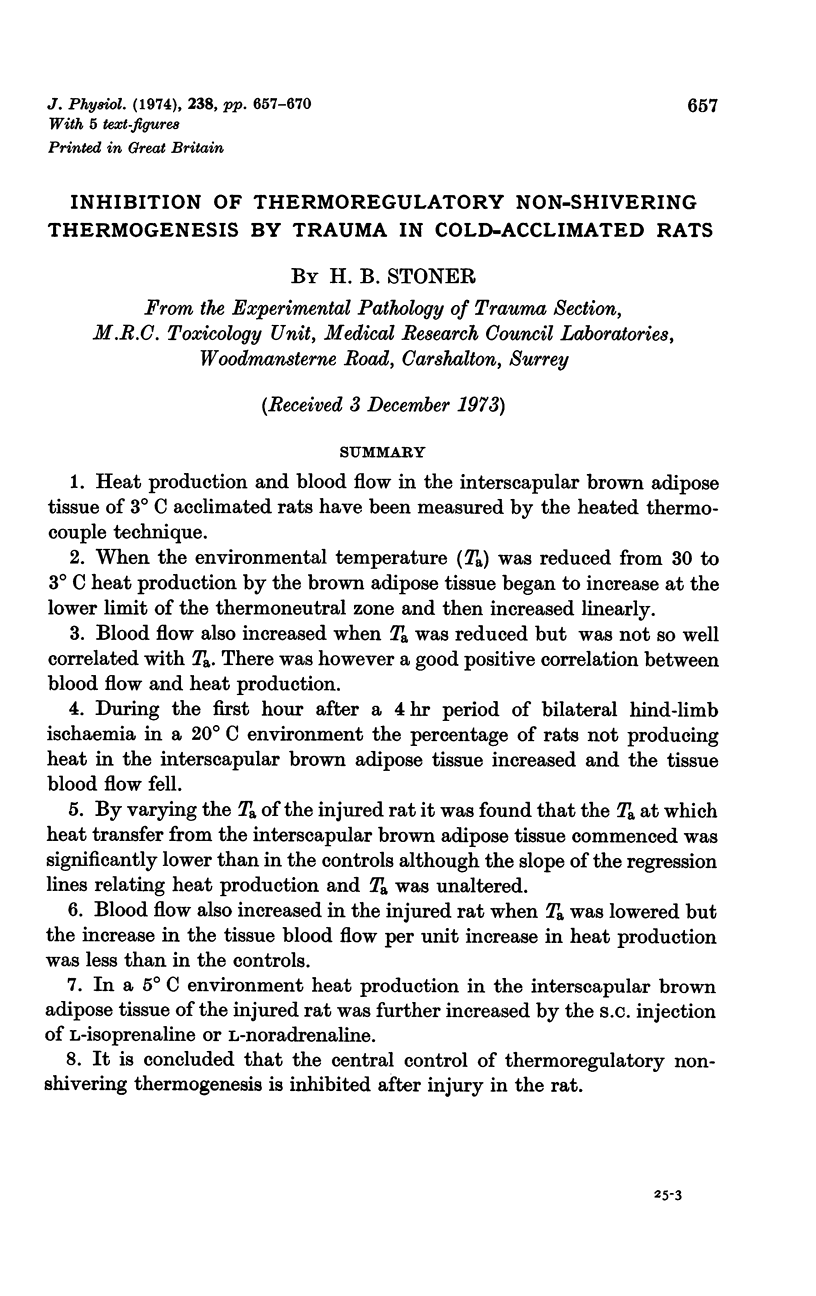
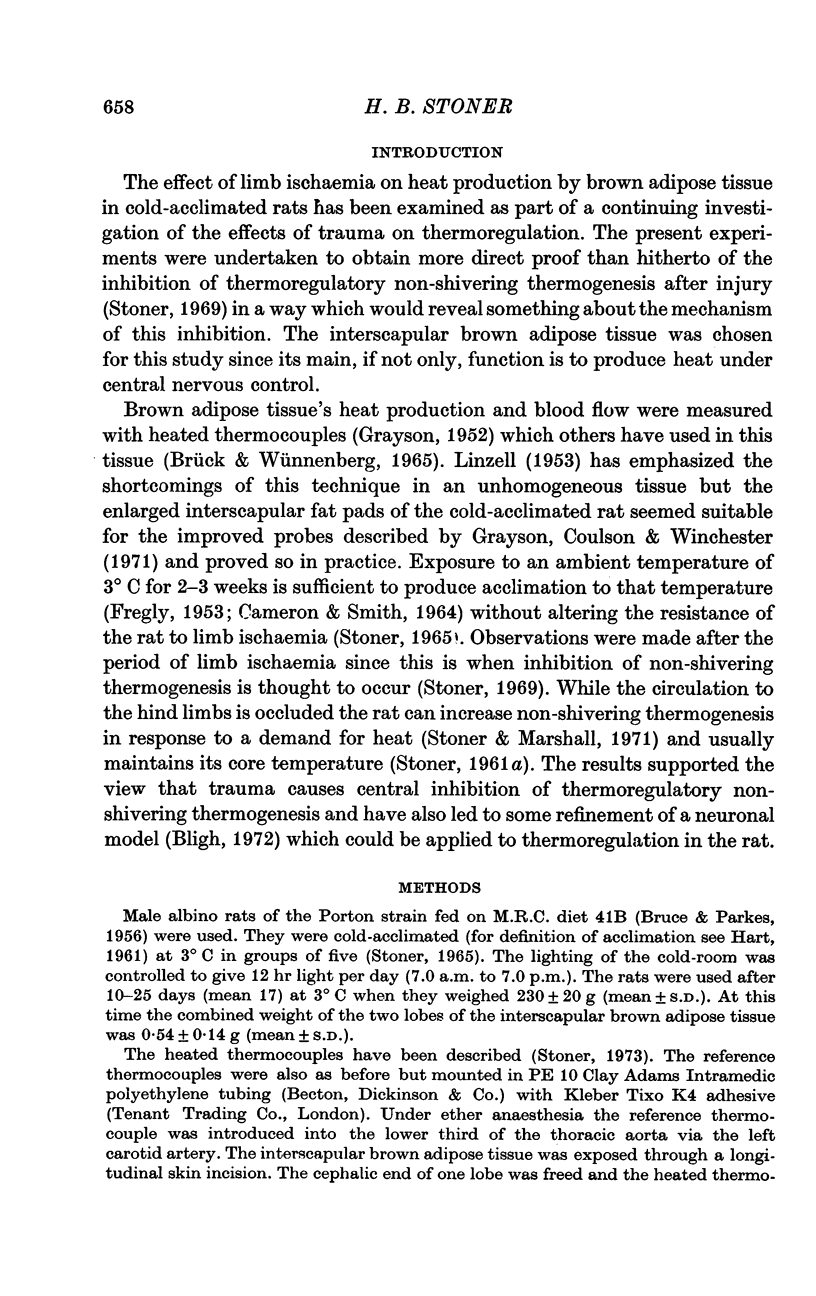
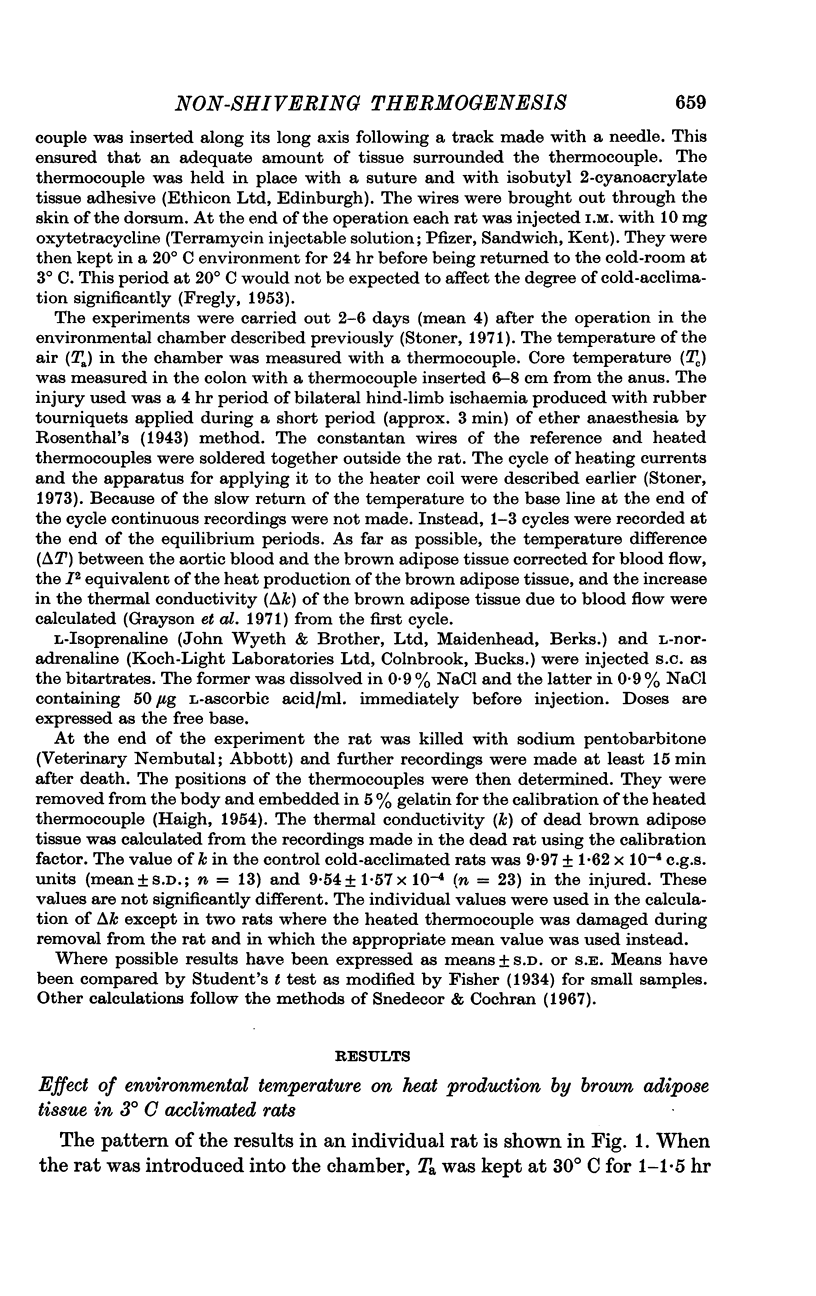
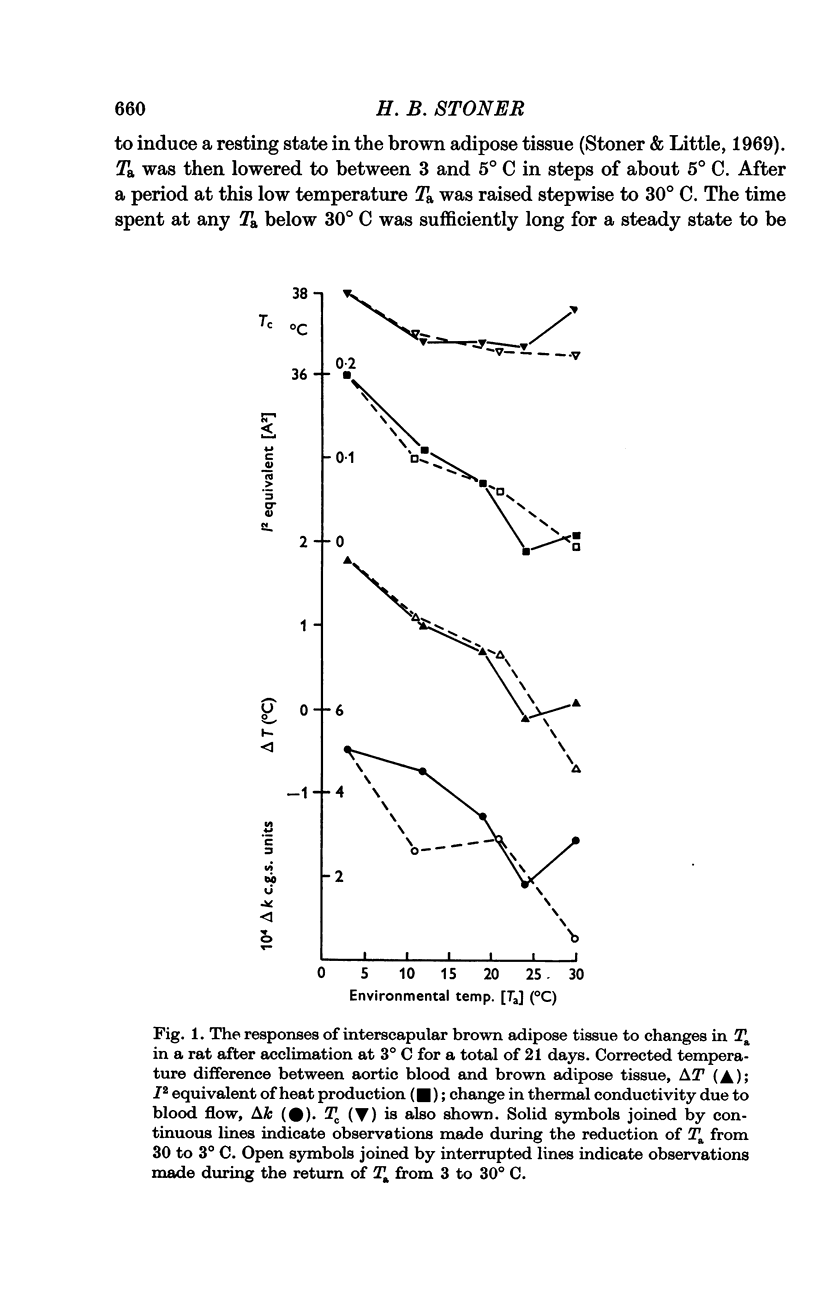
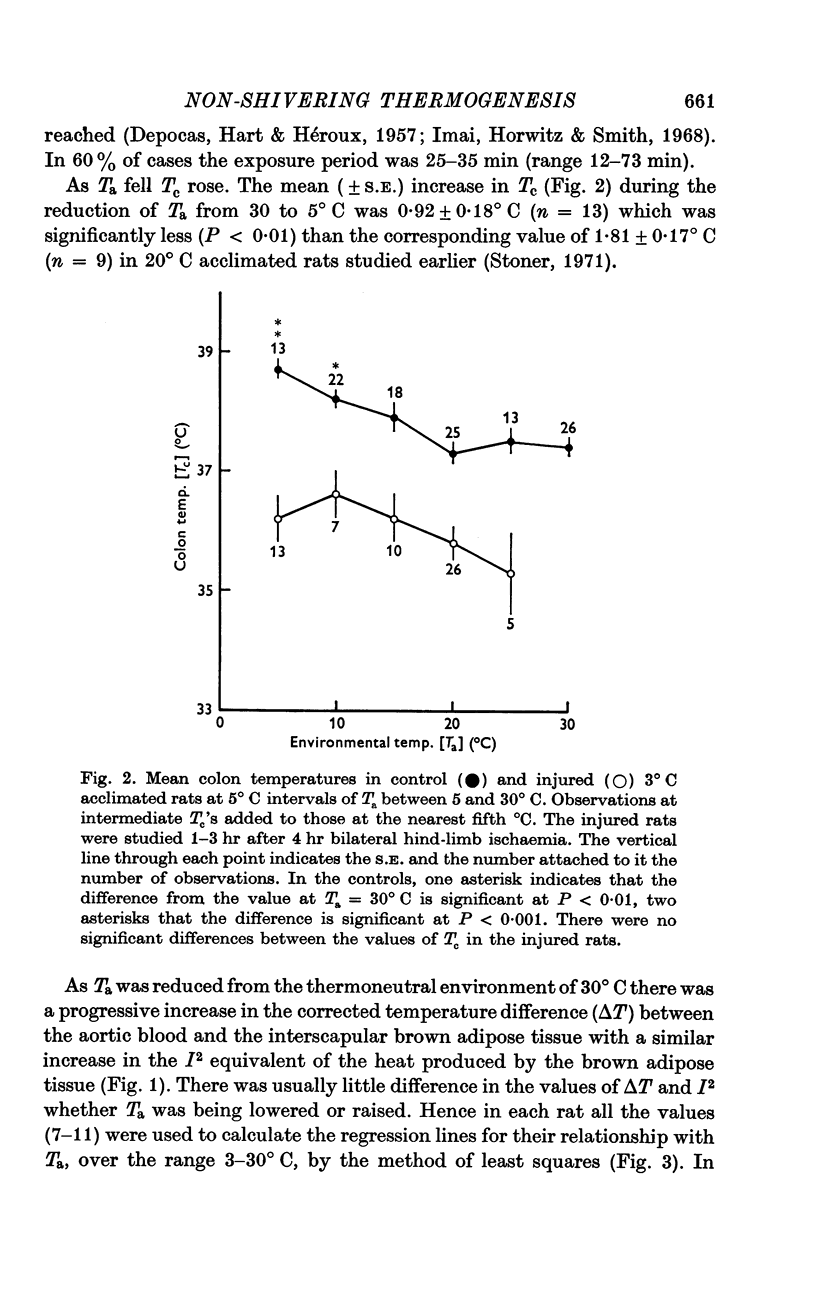
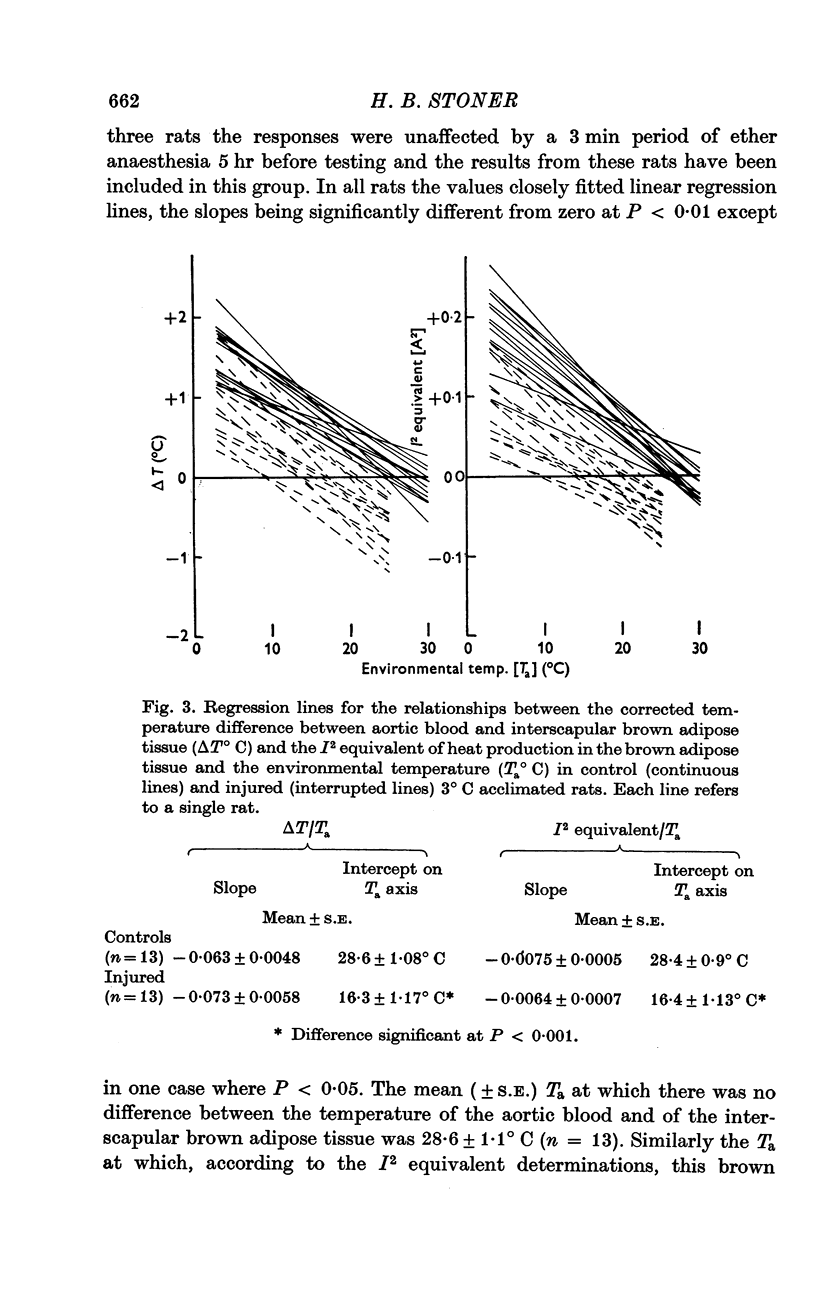
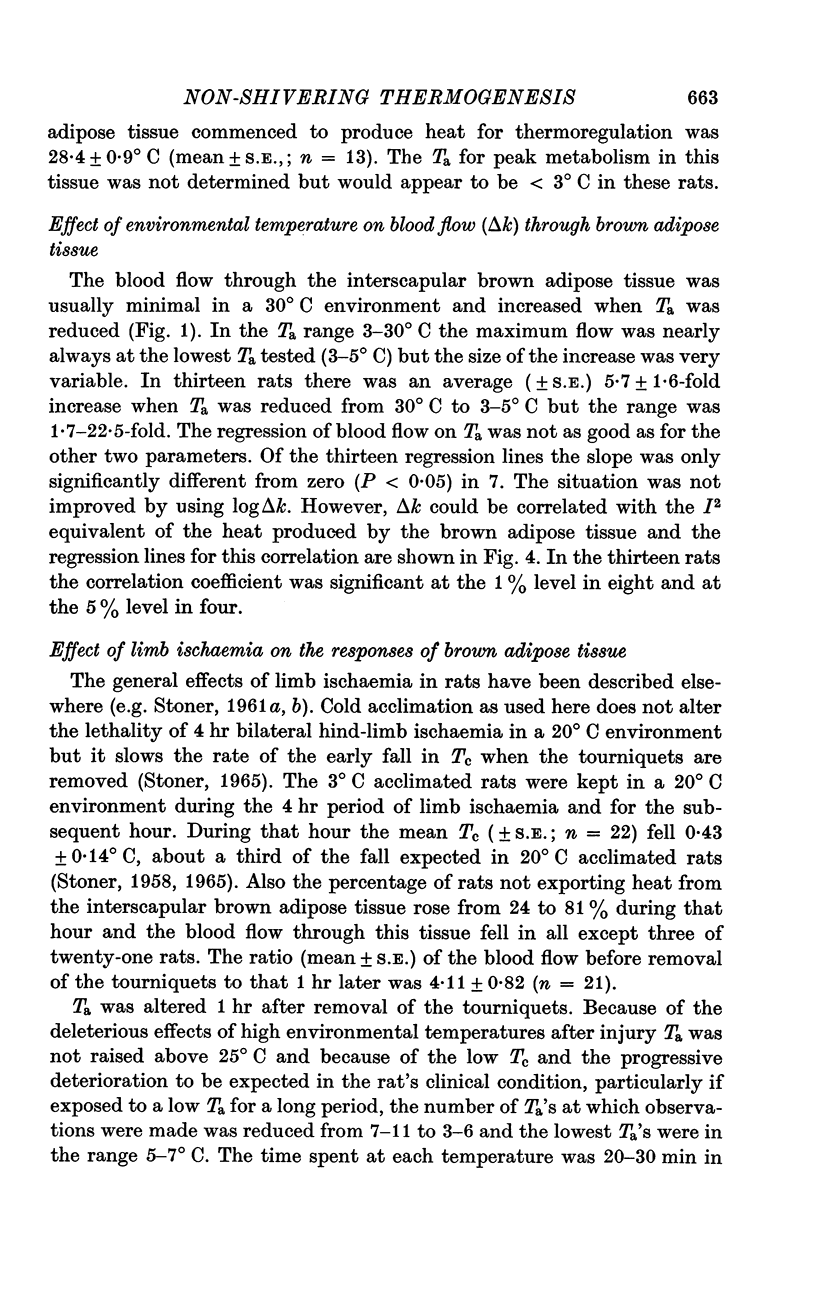
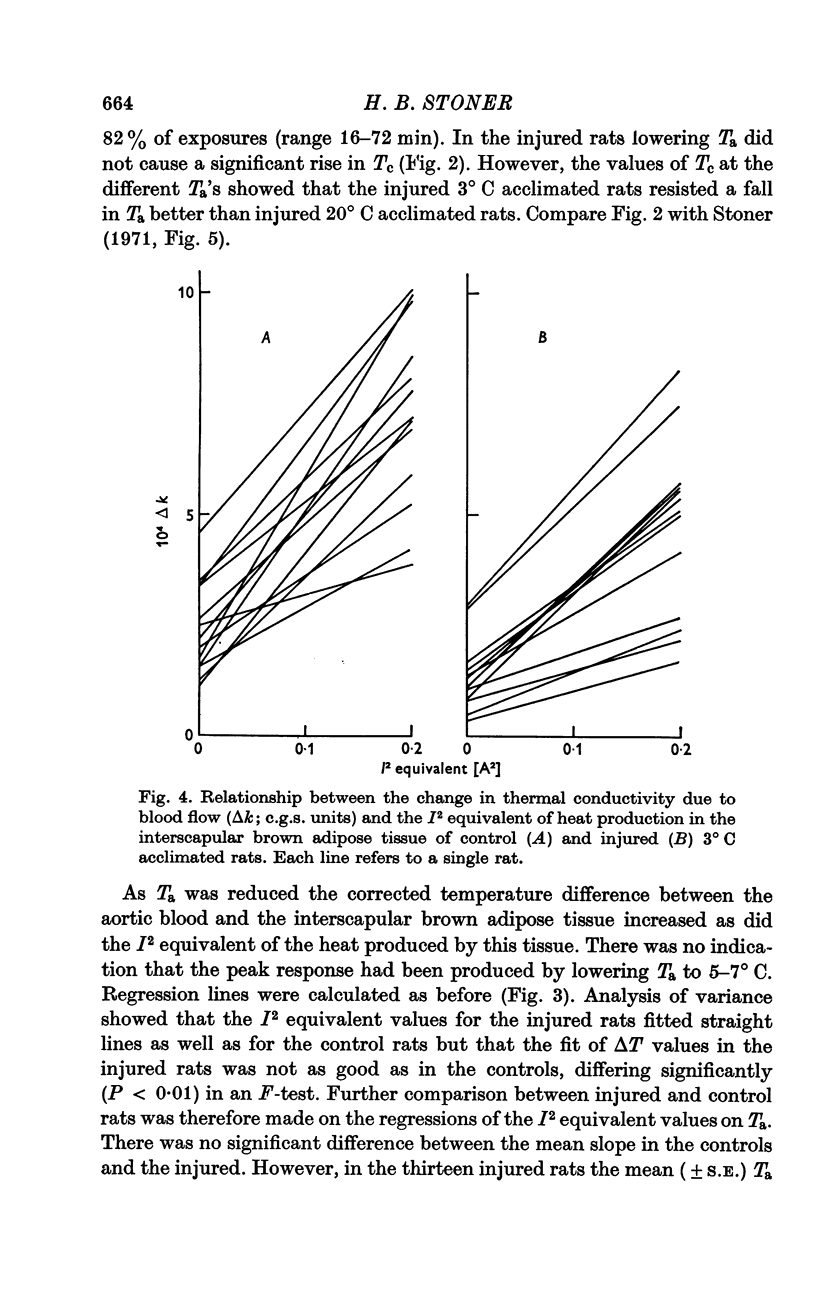
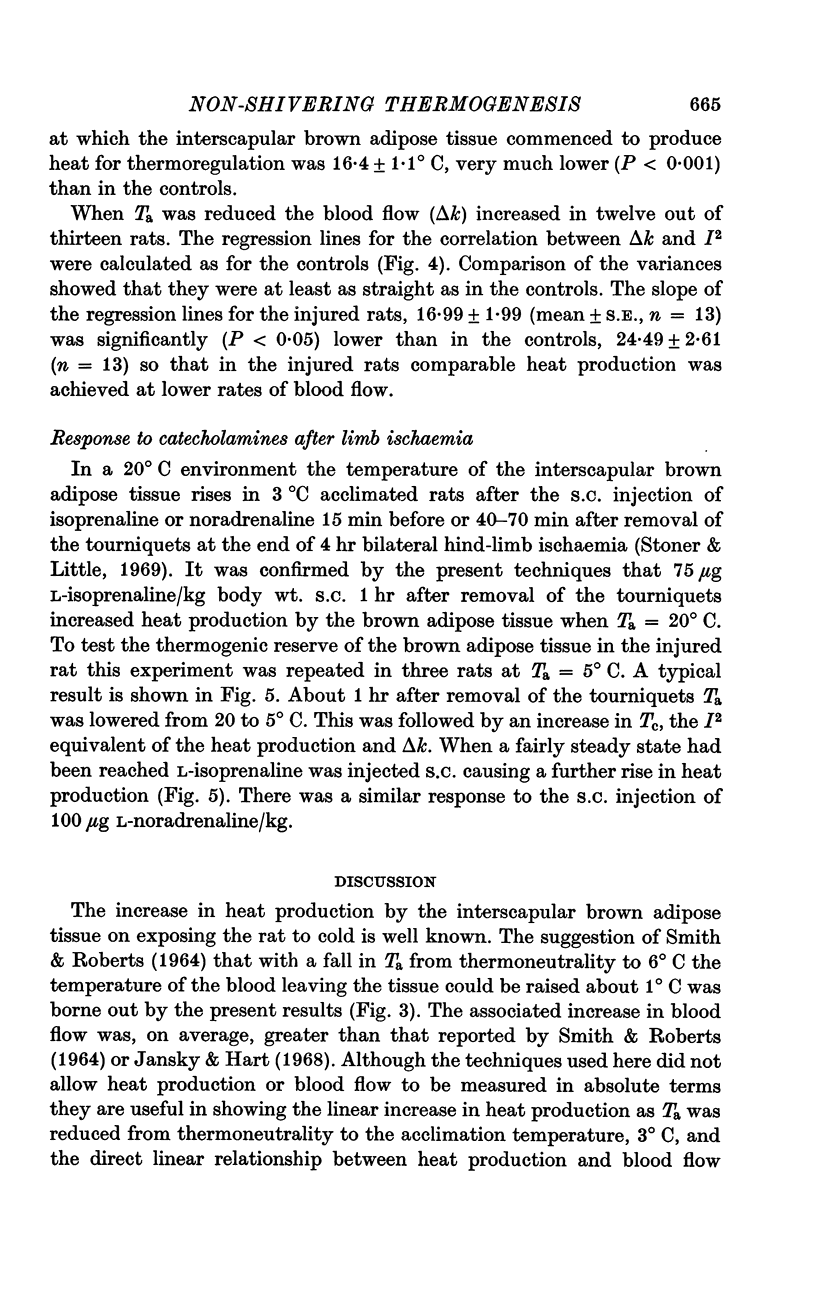
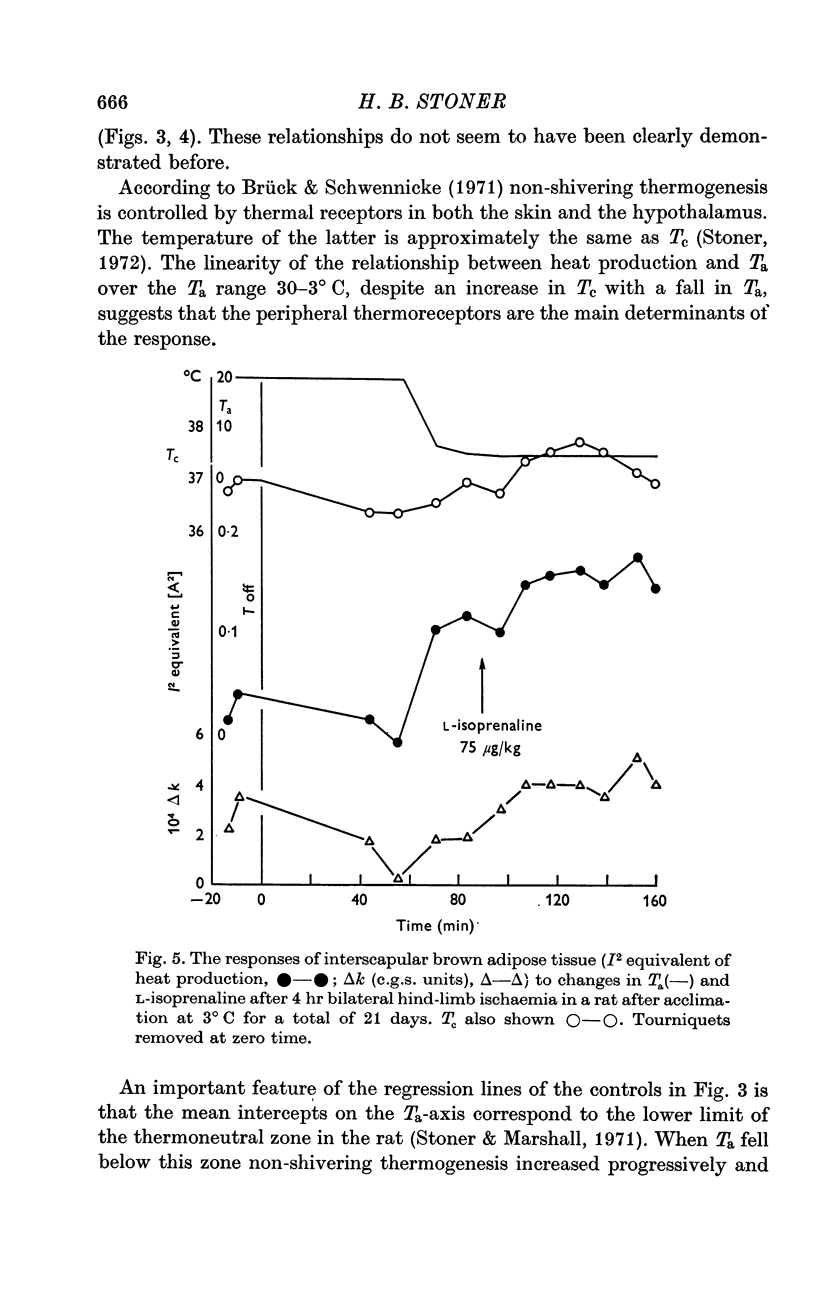
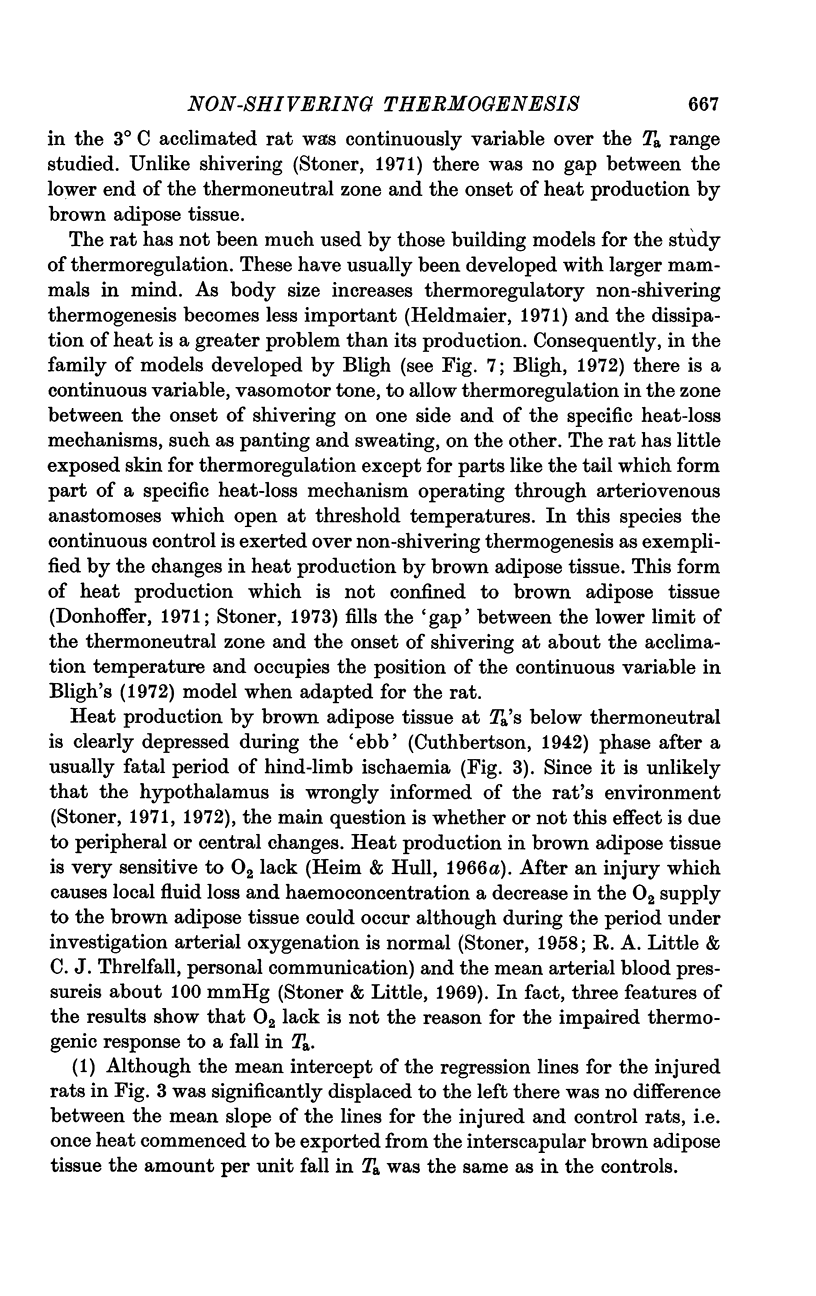
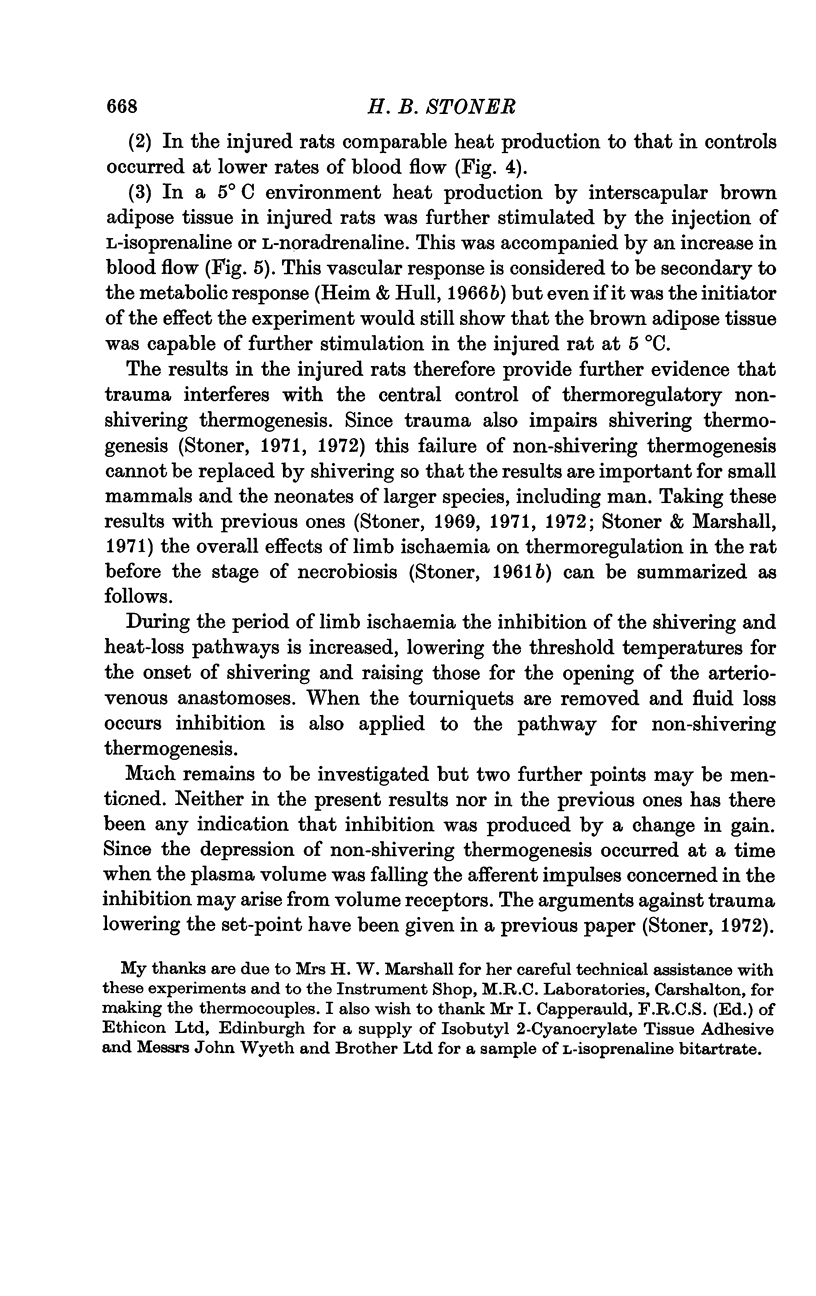
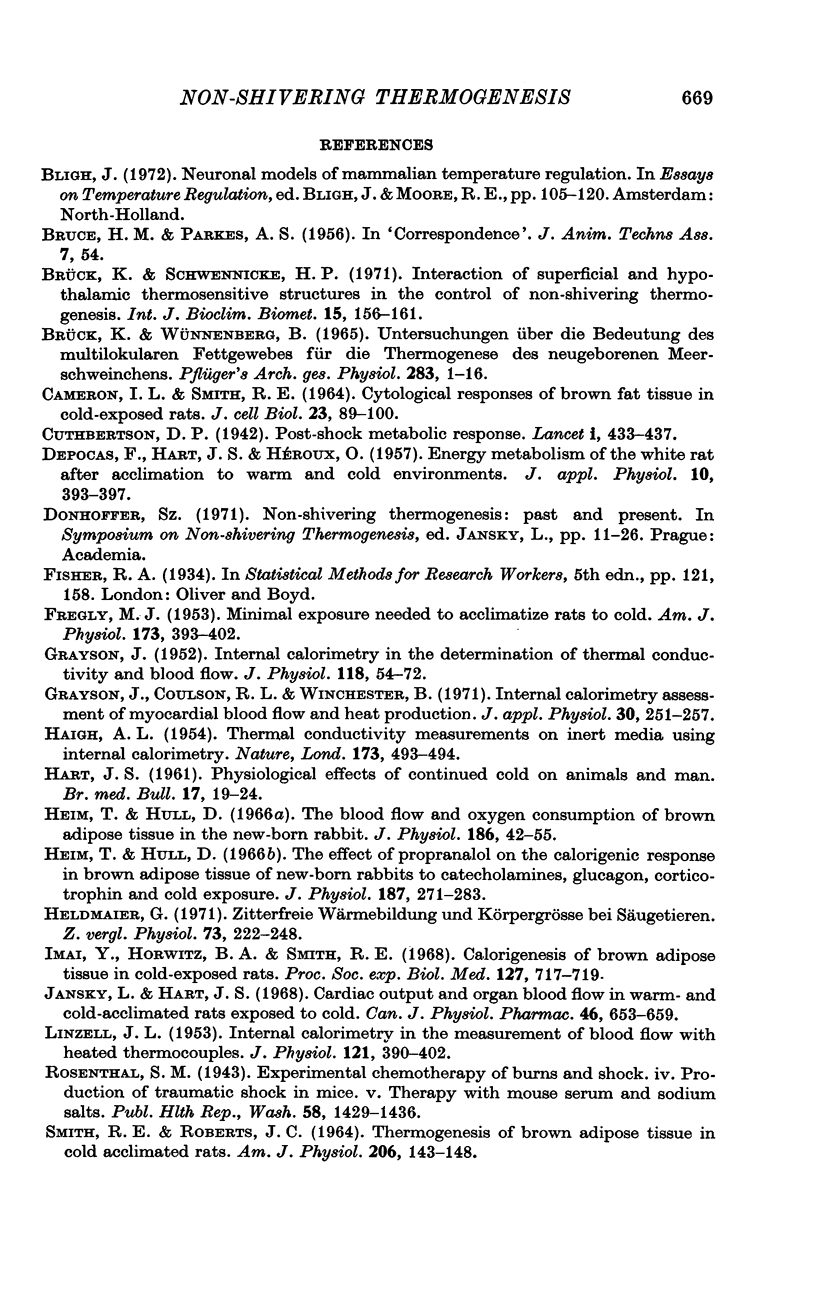
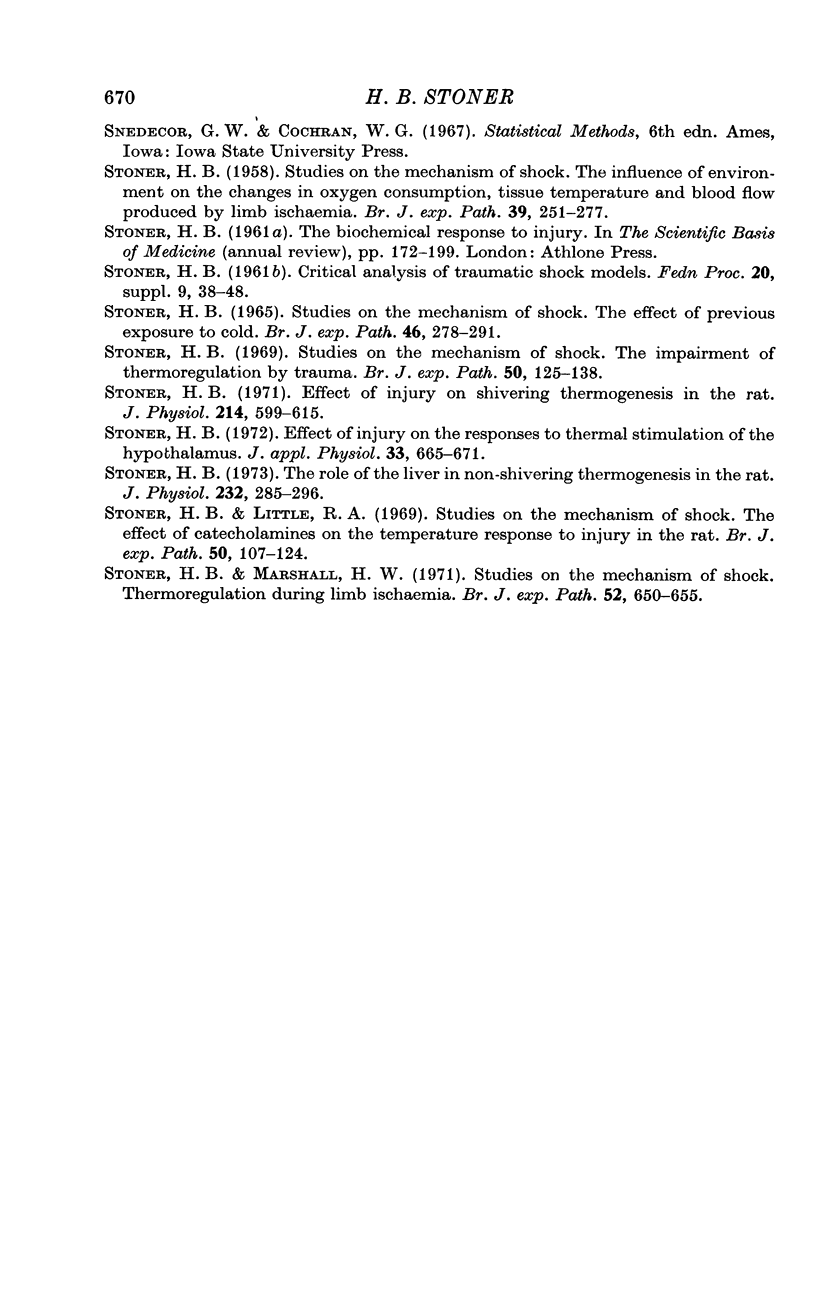
Selected References
These references are in PubMed. This may not be the complete list of references from this article.
- CAMERON I. L., SMITH R. E. CYTOLOGICAL RESPONSES OF BROWN FAT TISSUE IN COLD-EXPOSED RATS. J Cell Biol. 1964 Oct;23:89–100. doi: 10.1083/jcb.23.1.89. [DOI] [PMC free article] [PubMed] [Google Scholar]
- DEPOCAS F., HART J. S., HEROUX O. Energy metabolism of the white rat after acclimation to warm and cold environments. J Appl Physiol. 1957 May;10(3):393–397. doi: 10.1152/jappl.1957.10.3.393. [DOI] [PubMed] [Google Scholar]
- FREGLY M. J. Minimal exposures needed to acclimatize rats to cold. Am J Physiol. 1953 Jun;173(3):393–402. doi: 10.1152/ajplegacy.1953.173.3.393. [DOI] [PubMed] [Google Scholar]
- GRAYSON J. Internal calorimetry in the determination of thermal conductivity and blood flow. J Physiol. 1952 Sep;118(1):54–72. doi: 10.1113/jphysiol.1952.sp004772. [DOI] [PMC free article] [PubMed] [Google Scholar]
- Grayson J., Coulson R. L., Winchester B. Internal calorimetry--assessment of myocardial blood flow and heat production. J Appl Physiol. 1971 Feb;30(2):251–257. doi: 10.1152/jappl.1971.30.2.251. [DOI] [PubMed] [Google Scholar]
- HAIGH A. L. Thermal conductivity measurements on inert media using internal calorimetry. Nature. 1954 Mar 13;173(4402):493–494. doi: 10.1038/173493b0. [DOI] [PubMed] [Google Scholar]
- HART J. S. Physiological effects of continued cold on animals and man. Br Med Bull. 1961 Jan;17:19–24. doi: 10.1093/oxfordjournals.bmb.a069858. [DOI] [PubMed] [Google Scholar]
- Heim T., Hull D. The blood flow and oxygen consumption of brown adipose tissue in the new-born rabbit. J Physiol. 1966 Sep;186(1):42–55. doi: 10.1113/jphysiol.1966.sp008019. [DOI] [PMC free article] [PubMed] [Google Scholar]
- Heim T., Hull D. The effect of propranalol on the calorigenic response in brown adipose tissue of new-born rabbits to catecholamines, glucagon, corticotrophin and cold exposure. J Physiol. 1966 Nov;187(2):271–283. doi: 10.1113/jphysiol.1966.sp008088. [DOI] [PMC free article] [PubMed] [Google Scholar]
- Imai Y., Horwitz B. A., Smith R. E. Calorigenesis of brown adipose tissue in cold-exposed rats. Proc Soc Exp Biol Med. 1968 Mar;127(3):717–719. doi: 10.3181/00379727-127-32782. [DOI] [PubMed] [Google Scholar]
- Jansky L., Hart J. S. Cardiac output and organ blood flow in warm- and cold-acclimated rats exposed to cold. Can J Physiol Pharmacol. 1968 Jul;46(4):653–659. doi: 10.1139/y68-096. [DOI] [PubMed] [Google Scholar]
- LINZELL J. L. Internal calorimetry in the measurement of blood flow with heated thermocouples. J Physiol. 1953 Aug;121(2):390–402. doi: 10.1113/jphysiol.1953.sp004953. [DOI] [PMC free article] [PubMed] [Google Scholar]
- SMITH R. E., ROBERTS J. C. THERMOGENESIS OF BROWN ADIPOSE TISSUE IN COLD-ACCLIMATED RATS. Am J Physiol. 1964 Jan;206:143–148. doi: 10.1152/ajplegacy.1964.206.1.143. [DOI] [PubMed] [Google Scholar]
- STONER H. B. Studies on the mechanism of shock: the influence of environment on the changes in oxygen consumption, tissue temperature and blood flow produced by limb ischaemia. Br J Exp Pathol. 1958 Jun;39(3):251–277. [PMC free article] [PubMed] [Google Scholar]
- Stoner H. B. Effect of injury on shivering thermogenesis in the rat. J Physiol. 1971 May;214(3):599–615. doi: 10.1113/jphysiol.1971.sp009451. [DOI] [PMC free article] [PubMed] [Google Scholar]
- Stoner H. B. Effect of injury on the responses to thermal stimulation of the hypothalamus. J Appl Physiol. 1972 Nov;33(5):665–671. doi: 10.1152/jappl.1972.33.5.665. [DOI] [PubMed] [Google Scholar]
- Stoner H. B., Little R. A. Studies on the mechanism of shock. The effect of catecholamines on the temperature response to injury in the rat. Br J Exp Pathol. 1969 Apr;50(2):107–124. [PMC free article] [PubMed] [Google Scholar]
- Stoner H. B., Marshall H. W. Studies on the mechanism of shock. Thermoregulation during limb ischaemia. Br J Exp Pathol. 1971 Dec;52(6):650–655. [PMC free article] [PubMed] [Google Scholar]
- Stoner H. B. Studies on the mechanism of shock. The effect of previous exposure to cold. Br J Exp Pathol. 1965 Jun;46(3):278–291. [PMC free article] [PubMed] [Google Scholar]
- Stoner H. B. Studies on the mechanism of shock. The impariment of thermoregulation by trauma. Br J Exp Pathol. 1969 Apr;50(2):125–138. [PMC free article] [PubMed] [Google Scholar]
- Stoner H. B. The role of the liver in non-shivering thermogenesis in the rat. J Physiol. 1973 Jul;232(2):285–296. doi: 10.1113/jphysiol.1973.sp010270. [DOI] [PMC free article] [PubMed] [Google Scholar]


